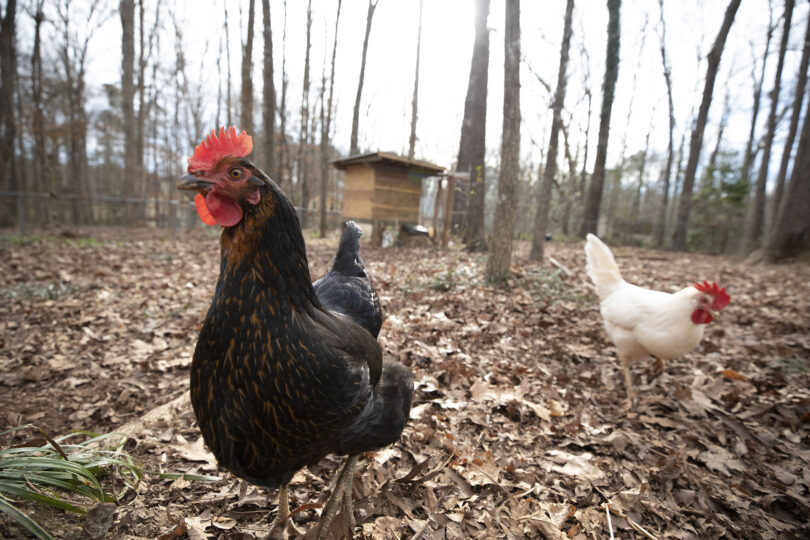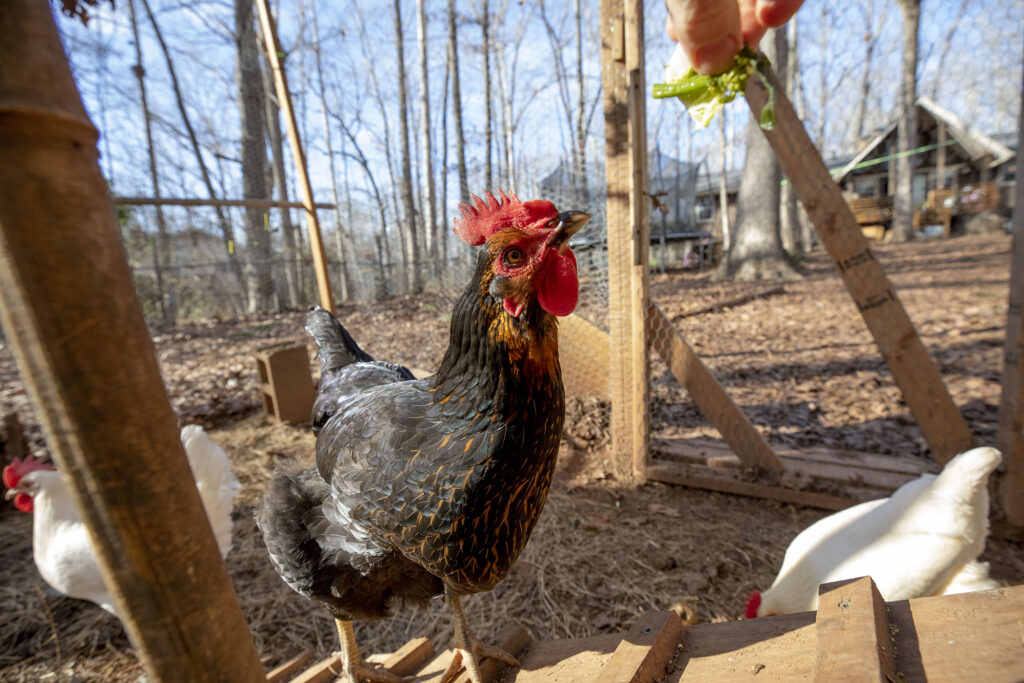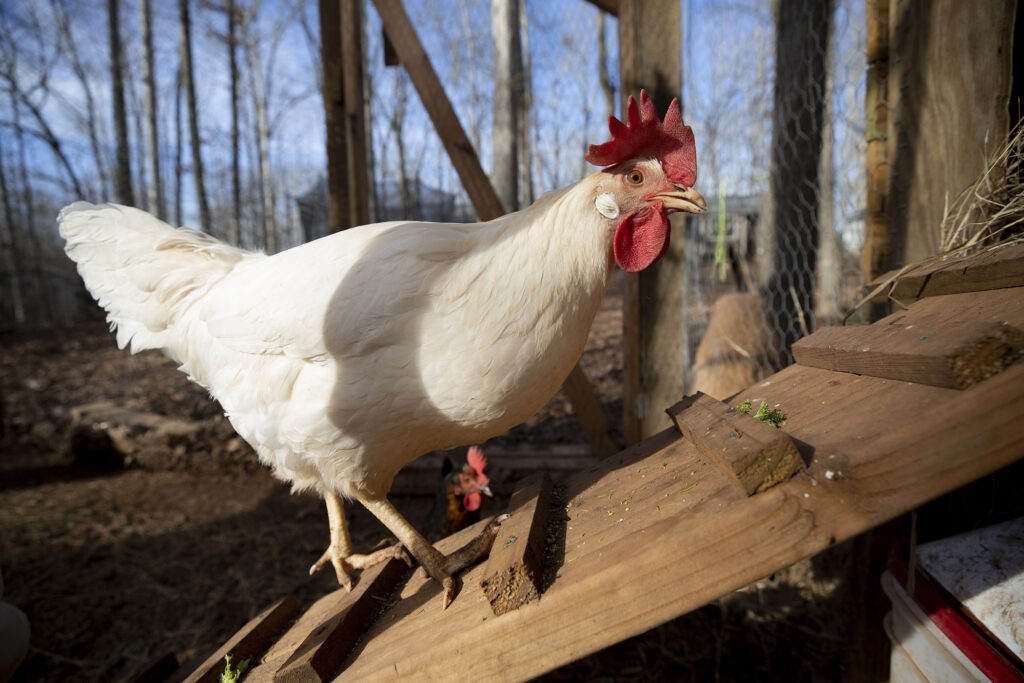



Backyard chickens risk pathogen spread
Keeping backyard chickens was already on the rise, and the hobby has become even more popular during the COVID-19 pandemic.
Chickens roam a backyard in Athens. (Photo by Chad Osborn/UGA)
“As a researcher who studies pathogen movement along different groups, I see backyard chickens as a potential interface where pathogens can spill over into wild birds, or vice versa, and even into people,” said Sonia Hernandez, professor of wildlife disease at the Warnell School of Forestry and Natural Resources and the College of Veterinary Medicine. “Owners need to seek information and medical care for their animals to minimize those risks.”

(Photo by Chad Osborn/UGA)
Hernandez and first author Andrea Ayala published their comprehensive review of pathogen transmission at the backyard chicken-wild bird interface in Frontiers in Veterinary Science. Ayala, now a postdoctoral researcher at Yale University, earned a Ph.D. in the College of Veterinary Medicine’s Comparative Biomedical Sciences program.
The most well-known pathogen carried by chickens is salmonella, and almost everyone is aware of it, said Hernandez. That’s due to public education and outreach efforts by the Centers for Disease Control and Prevention and public health agencies.
Food is the source for most of the estimated 1.35 million salmonella infections in people every year in the United States, according to the CDC. Most people who get ill from salmonella experience diarrhea, fever and stomach cramps, but there are 26,500 hospitalizations and 420 deaths every year.

Sonia Hernandez (Photo by Dorothy Kozlowski/UGA)
“They’re trying to stay on top of salmonella in backyard chickens because they have seen an explosion of salmonellosis in people as a result of this recent popularity of keeping chickens,” she said. “It can become especially dangerous if you mix little chickens with little people—young chickens that are shedding a lot of salmonella with small kids that don’t have the best hygiene practices.”
How to reduce risks
Ayala identified a number of practices that backyard chicken owners can implement to reduce the risk of pathogen emergence:
- keeping backyard chicken feeders where only chickens can reach them
- getting rid of wild bird feeders
- using mesh small enough to prevent wild birds from interacting with chickens
- removing contaminated water sources, insects and rodents; maintaining good hygiene—changing footwear, for example—when visiting different flocks
- limiting the number of visitors
“As backyard chickens become more common, the interactions between wild birds and backyard chickens are also likely to increase,” Ayala said. “Wild birds are attracted to food, water and shelter, and backyard chickens provide all three.”
The researchers’ concerns and recommendations won’t be a surprise to people who are familiar with raising chickens, especially commercial growers, who are very aware of rules from agencies like the U.S. Department of Agriculture that oversee animal health, according to Hernandez.

(Photo by Chad Osborn/UGA)
“The people who will find it the most surprising are newcomers, who get a few chickens as a hobby and have never really thought about the health of their chickens, their own health, and the impact that chickens can have on their environment,” she said.
Past examples of disease spillover
As Hernandez and Ayala document in their paper, it is well established that backyard chickens may serve as pathogen reservoirs to the commercial poultry industry and that the most likely mechanism of spillover involves wild birds. Perhaps the best documented example of a bacterial pathogen transmission from chickens to wild birds is Mycoplasma gallisepticum, a bacterium that causes chronic respiratory illness in chickens, which spilled over from poultry in 1994 into house finches and rapidly became endemic in North American passerine species.
The U.S. has experienced outbreaks of both Newcastle disease and avian influenza, including an outbreak of highly pathogenic avian influenza in the winter of 2016-17 that involved several backyard operations, Hernandez said.
“Historically, most highly pathogenic avian influenza viruses only affected chickens in commercial operations,” she said, “but recently, we have seen that they can—in rare cases—move into people, and there are increasing reports of it affecting backyard chickens and wild birds.”
If this kind of spillover event happens, it’s possible that the damage could extend beyond economic losses to include the loss of human life, she said.
Taking responsibility
“People need to recognize that they have to take some responsibility for their health and the health of their animals,” Hernandez said. “Also, we’re living in a pandemic at the moment because of a spillover event, plain and simple.”








